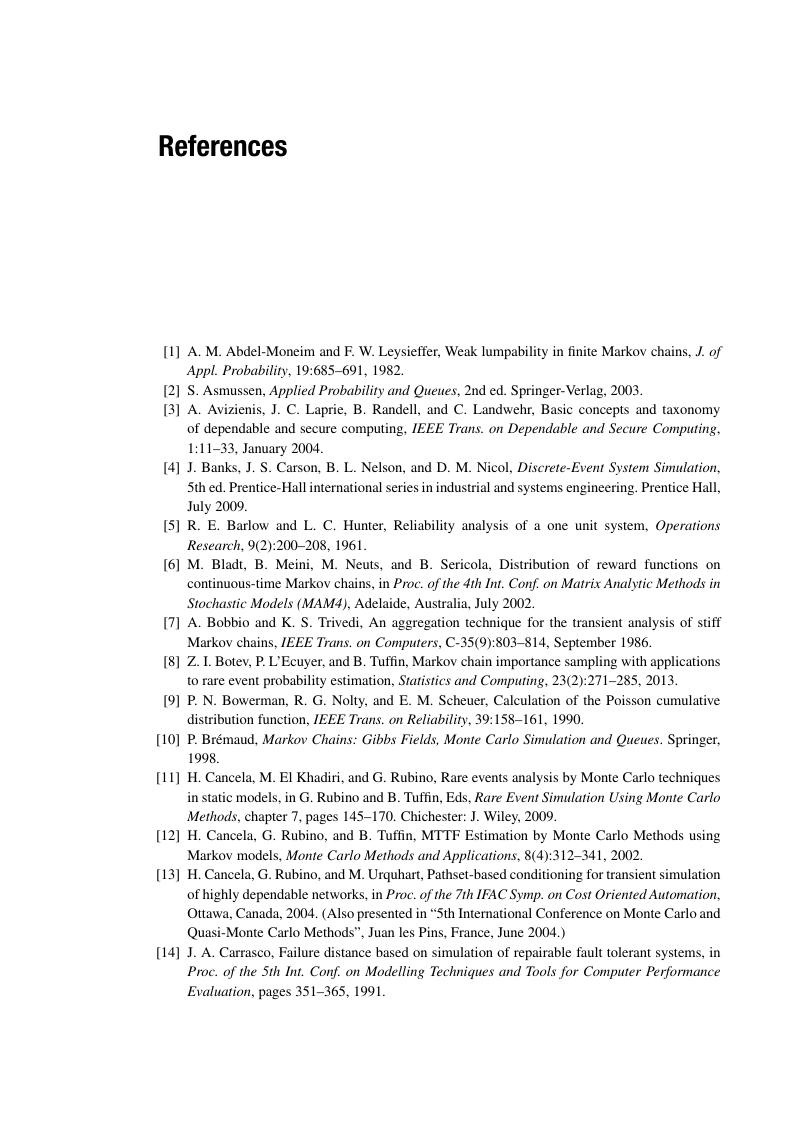Book contents
- Frontmatter
- Contents
- 1 Introduction
- 2 Discrete-time Markov chains
- 3 Continuous-time Markov chains
- 4 State aggregation
- 5 Sojourn times in subsets of states
- 6 Occupation times of subsets of states – interval availability
- 7 Linear combination of occupation times – performability
- 8 Stationarity detection
- 9 Simulation techniques
- 10 Bounding techniques
- References
- Index
- References
References
Published online by Cambridge University Press: 05 July 2014
- Frontmatter
- Contents
- 1 Introduction
- 2 Discrete-time Markov chains
- 3 Continuous-time Markov chains
- 4 State aggregation
- 5 Sojourn times in subsets of states
- 6 Occupation times of subsets of states – interval availability
- 7 Linear combination of occupation times – performability
- 8 Stationarity detection
- 9 Simulation techniques
- 10 Bounding techniques
- References
- Index
- References
Summary

Information
- Type
- Chapter
- Information
- Markov Chains and Dependability Theory , pp. 271 - 276Publisher: Cambridge University PressPrint publication year: 2014
